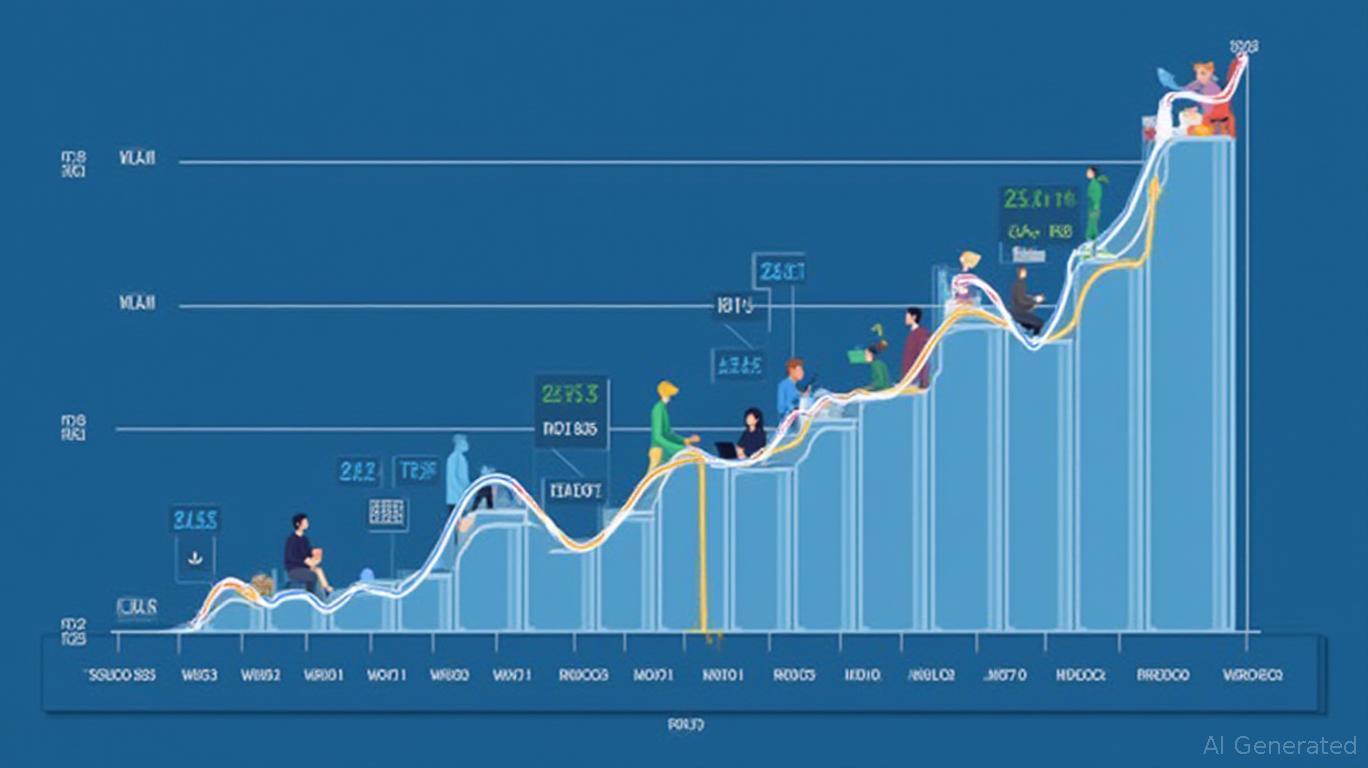Compass, Inc.'s Path to Profitability: A 2026 Turning Point
Compass, Inc. (COMP) has long been a lightning rod for debate among investors: Is its high-growth real estate brokerage model sustainable, or is it a cautionary tale of scaling too fast? Q1 2025's results provide the clearest evidence yet that Compass is on track to achieve its long-awaited profitability goal by 2026—and the data suggests now is the time to bet on its success.
Q1 2025: A Milestone Quarter
Compass delivered a performance that blends aggressive top-line growth with hard-won financial discipline. Revenue surged 28.7% year-over-year to $1.4 billion, outpacing the broader U.S. residential real estate market's 2.1% transaction decline. The net loss narrowed dramatically to $50.7 million, a $82.2 million improvement from Q1 2024, driven by operational efficiency and reduced non-cash expenses like stock-based compensation.
The most compelling metric? Adjusted EBITDA turned positive for the first time, rising to $15.6 million from a $20.1 million loss a year earlier. This milestone, coupled with free cash flow of $19.5 million (marking five consecutive quarters of positivity), signals a structural shift toward profitability.

The Path to Profitability: 56% Growth Isn't Too Steep
Analysts project Compass needs 56% average annual revenue growth between 2025 and 2026 to hit breakeven. While that sounds daunting, the math is surprisingly achievable:
- Market Share Gains: Compass's U.S. market share rose to 6.0% in Q1, a 125 basis point jump year-over-year. This is the fastest organic growth in 8 quarters, and the company's $52.4 billion Gross Transaction Value (GTV) outperformed the broader market's 3.5% GTV increase.
- Agent Network Strength: Principal agents grew 41.6% YoY to 20,656, with retention hitting 96.6%—a 30 basis point improvement. This sticky agent base is the engine of Compass's scalability.
- Operational Leverage: Operating cash flow soared 169% YoY to $23.1 million, while non-GAAP operating expenses (OPEX) grew just 11.5%—slower than revenue growth. Management reiterated its 2025 OPEX target of 3-4% growth, leaving room for margin expansion.
The Tech-Driven Flywheel
Compass's 3-Phased Price Discovery and Marketing Strategy is a game-changer. Adopted by 48.2% of non-Washington state listings, it reduced price drops by 30% and accelerated sales timelines by 20%, while boosting average closing prices by 2.9% (a $29,000 premium at its $1 million average price point). Tools like Compass One (used in 21% of closed deals) and Reverse Prospecting are turning agents into high-productivity powerhouses.
These initiatives aren't just about growth—they're about profitable growth. Higher prices and faster sales mean lower agent commissions as a percentage of revenue, while reduced price drops cut the costs of relisting properties.
Risk Considerations
No investment is without risk. Compass faces headwinds like:
- Market Volatility: Rising mortgage rates could dampen transaction volumes.
- Competitor Copycats: Rivals may replicate Compass's pricing strategies.
- Integration Costs: The $155 million Christie's acquisition adds complexity.
Yet Compass's low debt/equity ratio (12%) and $127 million cash balance provide a buffer. The company also generates $23 million in operating cash quarterly, ensuring it can weather short-term dips.
Investment Thesis: Buy Before the Turn
At its current valuation of $1.8 billion, Compass trades at a 3.3x 2025E revenue multiple—far below peers like Redfin (RDFN: 5.6x) and Zillow (Z: 6.2x). This discount reflects skepticism about its path to profitability. But the data tells a different story:
- 2026 Breakeven: If Compass maintains its current trajectory, it could achieve net income breakeven by mid-2026, based on its $1.0 billion+ annual revenue run rate and OPEX control.
- Catalysts Ahead: Q2 guidance calls for $2.0–$2.15 billion in revenue, with Adjusted EBITDA hitting $115–$135 million. Positive free cash flow for the full year is now a near-certainty.
However, historical performance of a buy-and-hold strategy following positive earnings announcements from 2020 to 2025 must be considered. During this period, such an approach would have resulted in a -18.63% compound annual growth rate (CAGR) and a maximum drawdown of 76.28%, underscoring past volatility. Yet Compass's current financial trajectory—marked by consistent free cash flow and narrowing net losses—suggests a divergence from historical patterns. The company's enhanced operational discipline and path to 2026 profitability now present a compelling opportunity to capitalize on undervaluation before the market catches up.
Investors willing to look beyond near-term noise should act now. Once Compass hits profitability, its valuation multiple will expand, and the stock could rally 100%+—especially if it executes on its $10 billion+ revenue potential by 2030.
Final Verdict: A Compelling Buy at the Inflection Point
Compass is no longer a “growth at all costs” story. It's a profitability play with a clear roadmap, supported by a robust agent network, tech-driven efficiency, and a balance sheet that won't break. The narrowing net loss, positive cash flow, and analyst consensus on a 2026 breakeven make this a rare opportunity to buy a high-growth company at a discount.
For investors with a 2–3 year horizon, Compass offers asymmetric upside: limited downside (given its cash reserves) and massive upside if it executes. This is a “buy the dip” stock—act before the market prices in the turning point.
Disclosure: The author holds no position in Compass, Inc. at the time of writing. Always conduct your own research before making investment decisions.

Comments
No comments yet